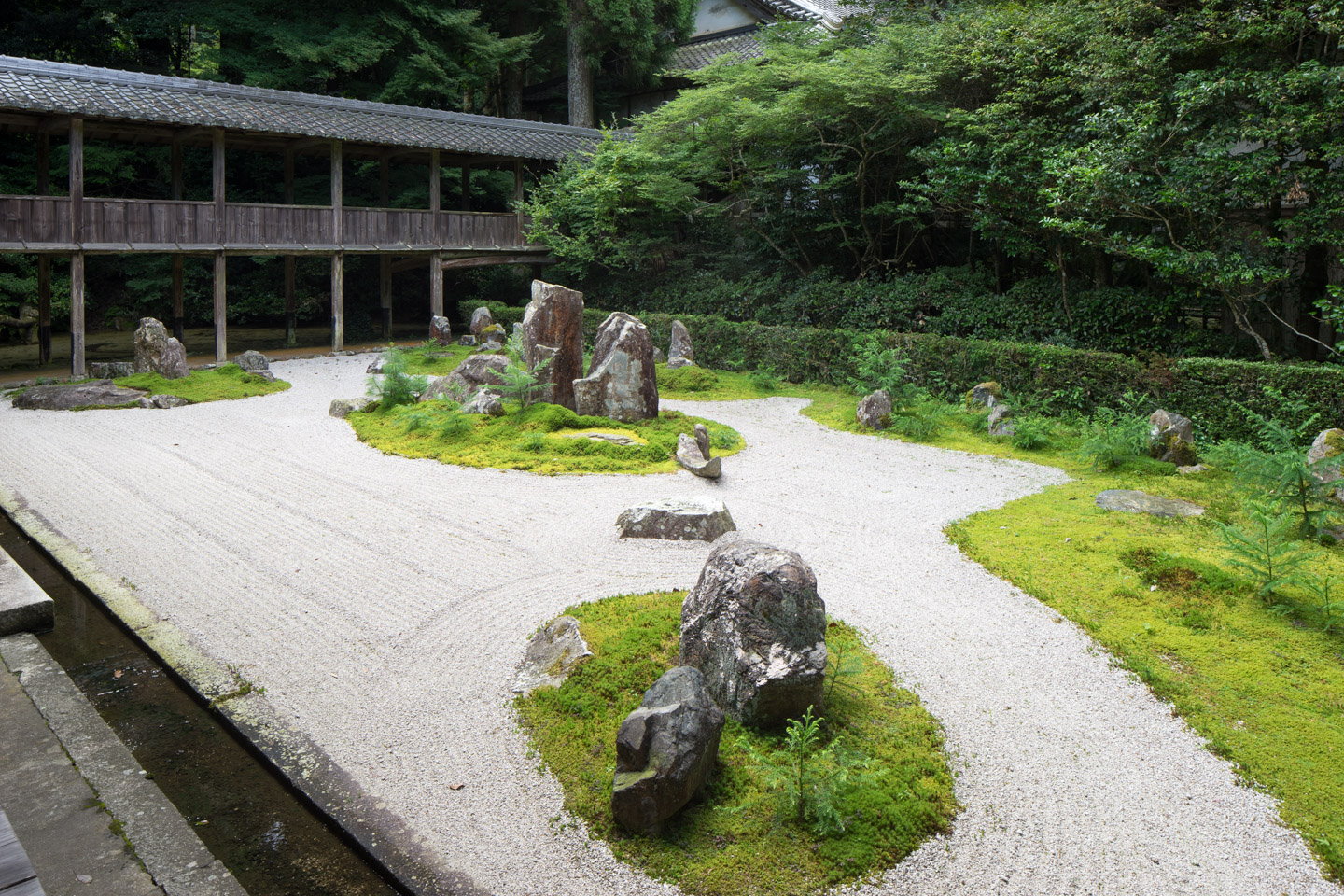Ryōtan-ji Temple
Ryōtan-ji Temple
A Zen temple with beautiful gardens at the foot of Sawayama
place Area: Hikone
access_time Published: 2020.02.21
Name in Japanese: 龍潭寺
Pronunciation: Ryōtan-ji
Ryōtan-ji Temple is one of several interesting Buddhist temples at the foot of Mt. Sawa on the eastern side of Hikone, close to the Biwako railway line.
The temple is invisible from the road and the two entrances are inconspicuous – there’s a gap in a hedge with a narrow path leading into the woods, and a separate larger entrance with a covered gate. Next to the path is a statue of Kannon surrounded by Ishida Mitsunari’s battle flags and a little further along the path is a seated statue of Mitsunari himself looking impassive. The path leads to the impressive main gate standing among rich foliage with gardens and a Buddha hall glimpsed within.
Ryōtan-ji is a temple of the Rinzai Zen sect. It’s a branch temple of another Ryōtan-ji in today’s Hamamatsu, Shizuoka, where the Ii clan originated. It was established by the renowned priest Gyōki in 733. Ii Tomoyasu, founder of the Ii clan was buried there in the middle of the Heian period, and Ii Naohira built a Zen temple there at the end of the Muromachi period.
After the defeat of Ishida Mitsunari at Sekigahara in 1600, Ii Naomasa occupied Sawayama Castle. He invited Kōten Sōken, the fifth generation Zen priest of Ryōtan-ji Temple to build a branch temple at the foot of Sawayama. Its principal image is of Shaka Nyorai, the historical Buddha. Ryōtan-ji had numerous branch temples in the suburbs of Hikone where many monks could pursue their studies.
Passing through the gate, a footpath up to Mt. Sawa passes stone carvings of the Seven Lucky Gods and up through a cemetery. Here are the graves of many historical persons such as Ii Naosuke’s mother and Naosuke’s concubine.
To the left are the abbot’s quarters, built in the early Edo period, and one of the few such buildings in Hikone. The sliding doors of the abbot’s quarters were painted by Morikawa Kyoriku, a disciple of the haiku poet Matsuo Bashō. Each painting rewards close inspection – look out for the amusing image of a robed gentleman mounted on a fish leaping out of the water. There are many other artworks in various styles, including numerous daruma figures both small and very large. A Daruma Festival is held every April 1 and 2, hence the temple’s alias of “Daruma Temple”.
Another of its aliases is “Garden Temple”. At Ryōtan-ji, there was a dormitory of the Zen university which had a gardening department. This was the start of a landscaping vocational school. The gardens built by the monks for practice are still there.
Teahouses where Ii Naosuke and Kobori Enshū enjoyed the tea ceremony were built using materials from the gate of Sawayama Castle. The garden to east of the study features a large pond with the mountain beyond it. The garden to the north is built on two levels. The garden to the south of the abbot’s quarters is a stone garden arranged with 48 stones. On the hill behind the garden, there are memorial pagodas to Musō Soseki and various Zen masters, and a garden shrine in memory of the pioneers of landscaping. It’s said that the various gardens are suited to different activities besides just looking – there are gardens for thinking, reflection, and worship.
When visiting Ryōtan-ji, be sure to make time to visit nearby Seiryō-ji and Ōhora Benzaiten.
Location
place 1104 Furusawa-cho, Hikone, Shiga prefecture

